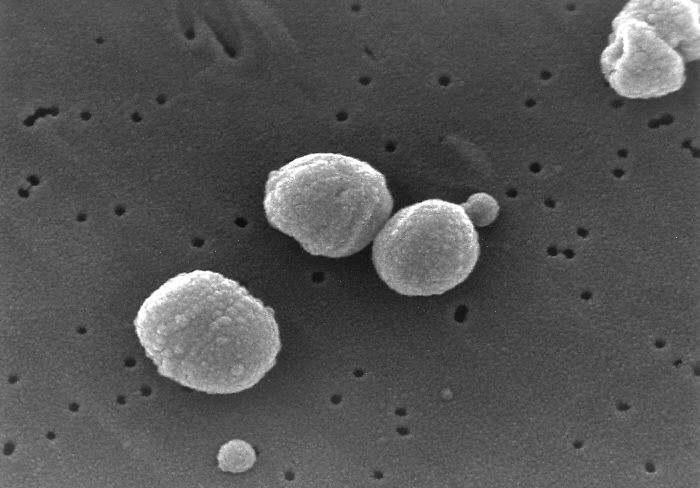Community-acquired pneumonia: Difference between revisions
(Moved Curb65 and PSS to Natural hx and prognosis) |
(added table) |
||
| Line 33: | Line 33: | ||
==Diagnosis== | ==Diagnosis== | ||
[[Community-acquired pneumonia history and symptoms| History and Symptoms]] | [[Community-acquired pneumonia physical examination | Physical Examination]] | [[Community-acquired pneumonia laboratory findings |Laboratory Findings]] | [[Community-acquired pneumonia chest x ray|Chest X Ray]] | [[Community-acquired pneumonia CT|CT]] | [[Community-acquired pneumonia ultrasound|Ultrasound]] | [[Community-acquired pneumonia other diagnostic studies|Other Diagnostic Studies]] | [[Community-acquired pneumonia history and symptoms| History and Symptoms]] | [[Community-acquired pneumonia physical examination | Physical Examination]] | [[Community-acquired pneumonia laboratory findings |Laboratory Findings]] | [[Community-acquired pneumonia chest x ray|Chest X Ray]] | [[Community-acquired pneumonia CT|CT]] | [[Community-acquired pneumonia ultrasound|Ultrasound]] | [[Community-acquired pneumonia other diagnostic studies|Other Diagnostic Studies]] | ||
A [[clinical prediction rule]] found the five following signs from the medical history and [[physical examination]] best predicted infiltrates on the chest [[radiography|radiograph]] of 1134 patients presenting to an emergency room:<ref name="pmid2221647">{{cite journal |author=Heckerling PS, Tape TG, Wigton RS, ''et al'' |title=Clinical prediction rule for pulmonary infiltrates |journal=Ann. Intern. Med. |volume=113 |issue=9 |pages=664–70 |year=1990 |pmid=2221647 |doi=}}</ref> | |||
*Temperature > 100 degrees F (37.8 degrees C) | |||
*Pulse > 100 beats/min | |||
*[[Rales|Crackles]] | |||
*Decreased [[breath sound]]s | |||
*''Absence'' of [[asthma]] | |||
{| class="wikitable" | |||
|+ The probability of an infiltrate based on the number of findings.<ref name="pmid17853631">{{cite journal| author=Ebell MH| title=Predicting pneumonia in adults with respiratory illness. | journal=Am Fam Physician | year= 2007 | volume= 76 | issue= 4 | pages= 560-2 | pmid=17853631 | doi= | pmc= | url=http://www.ncbi.nlm.nih.gov/entrez/eutils/elink.fcgi?dbfrom=pubmed&tool=sumsearch.org/cite&retmode=ref&cmd=prlinks&id=17853631 }} </ref> <ref name="pmid2221647">{{cite journal |author=Heckerling PS, Tape TG, Wigton RS, ''et al'' |title=Clinical prediction rule for pulmonary infiltrates |journal=Ann. Intern. Med. |volume=113 |issue=9 |pages=664–70 |year=1990 |pmid=2221647 |doi=}}</ref> | |||
! Number of findings!!Primary care<ref name="pmid17853631"/>!! Emergency Room<ref name="pmid2221647"/> | |||
|- | |||
| 5|| 47%|| 75% | |||
|- | |||
| 4 || 27|| 56 | |||
|- | |||
| 3 || 8|| 22 | |||
|- | |||
| 2 || 4|| 11 | |||
|- | |||
| 1 || 1|| 3 | |||
|- | |||
| 0 || 1|| 2 | |||
|} | |||
==Treatment== | ==Treatment== | ||
| Line 39: | Line 65: | ||
==Case Studies== | ==Case Studies== | ||
[[Community-acquired pneumonia case study one|Case #1]] | [[Community-acquired pneumonia case study one|Case #1]] | ||
==References== | |||
<references/> | |||
[[Category:Disease]] | [[Category:Disease]] | ||
Revision as of 16:51, 20 May 2013
| Pneumonia | |
 |
|---|
|
Community-Acquired Pneumonia Microchapters |
|
Differentiating Community-acquired pneumonia from other Diseases |
|
Diagnosis |
|
Treatment |
|
Case Studies |
|
Community-acquired pneumonia On the Web |
|
American Roentgen Ray Society Images of Community-acquired pneumonia |
|
Directions to Hospitals Treating Community-acquired pneumonia |
|
Risk calculators and risk factors for Community-acquired pneumonia |
For the main page on pneumonia, click here
For patient information on pneumonia, click here
Editor(s)-in-Chief: C. Michael Gibson, M.S., M.D. [1] Phone:617-632-7753; Associate Editor(s)-In-Chief: Priyamvada Singh, M.D. [2]
Synonyms and keywords: CAP
Overview
Historical Perspective
Pathophysiology
Causes
Differentiating Community-acquired pneumonia from other Diseases
Epidemiology and Demographics
Risk Factors
Natural History, Complications and Prognosis
Criteria for Severe Community-acquired pneumonia | CURB-65 Clinical Prediction Rule | Community-acquired pneumonia Severity Index
Diagnosis
History and Symptoms | Physical Examination | Laboratory Findings | Chest X Ray | CT | Ultrasound | Other Diagnostic Studies
A clinical prediction rule found the five following signs from the medical history and physical examination best predicted infiltrates on the chest radiograph of 1134 patients presenting to an emergency room:[1]
- Temperature > 100 degrees F (37.8 degrees C)
- Pulse > 100 beats/min
- Crackles
- Decreased breath sounds
- Absence of asthma
| Number of findings | Primary care[2] | Emergency Room[1] |
|---|---|---|
| 5 | 47% | 75% |
| 4 | 27 | 56 |
| 3 | 8 | 22 |
| 2 | 4 | 11 |
| 1 | 1 | 3 |
| 0 | 1 | 2 |
Treatment
Medical Therapy | Primary Prevention | Prevention | Cost-Effectiveness of Therapy | Future or Investigational Therapies
Case Studies
References
- ↑ 1.0 1.1 1.2 Heckerling PS, Tape TG, Wigton RS; et al. (1990). "Clinical prediction rule for pulmonary infiltrates". Ann. Intern. Med. 113 (9): 664–70. PMID 2221647.
- ↑ 2.0 2.1 Ebell MH (2007). "Predicting pneumonia in adults with respiratory illness". Am Fam Physician. 76 (4): 560–2. PMID 17853631.